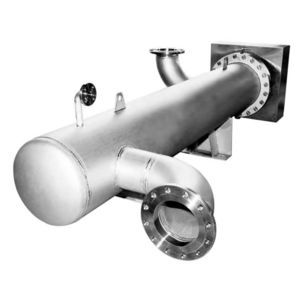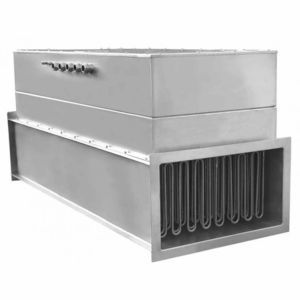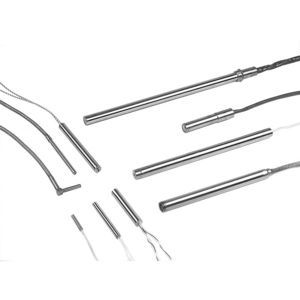
- Industrial machines and equipment
- Heat Exchanger and Refrigeration
- Immersion heater
- heatsystems GmbH & Co. KG
Immersion heater






Add to favorites
Compare this product
Description
Screw-in heaters are designed for efficiently heating liquid or gaseous fluids which are flowing or stagnant. The design is based on the general conditions such as the type and properties of the respective fluid, pressure and temperature as well as the desired operating points in the process.
Screw-in heaters directly heat fluids, converting electrical energy in the heating rods to thermal energy. The thermal energy is then transferred from the heating rods to the fluid. Here, it is important that the design be matched to the general conditions, for each fluid has its specific properties.
For example, these fluids are heated by the screw-in heaters:
I. Water
Drinking water, max. surface load depending on the water hardness 4 – 6 W/cm²
Circulating and/or heating water, max. surface load approx. 10 W/cm²
Softened water, observe the maximally admissible chloride content, max. surface load approx. 10 W/cm²
Fully desalted water; here, non-ferrous metals and soldered models should not be used, max. surface load approx. 10 W/cm²
II. Oil
Heavy oil, not pumpable in a cold condition, maximum surface load between 1 and 2 W/cm² depending on the quality
Hydraulics oil, maximum surface load approx. 0.6 – 1.2 W/cm²
Lubricating oil, steam turbine oil, max. surface load approx. 1 W/cm²
Insulating oil, maximum surface load approx. 0.3 – 0.6 W/cm²Insulating oil, maximum surface load approx. 0.3 – 0.6 W/cm²
Heat transfer oil, film temperature calculation acc. to DIN 4754 required, maximum surface load approx. 10 W/cm²depending on the flow velocity and oil
Fuel oil, diesel, heating to max. 40 °C, max. surface load approx. 4 W/cm²
III. Gases
Air
Natural gas
Flue gas
Nitrogen
Catalogs
No catalogs are available for this product.
See all of heatsystems GmbH & Co. KG‘s catalogsRelated Searches
- Vessel
- Heat exchanger unit
- Liquid/liquid heat exchanger
- Resistance heater
- Water vessel
- Heater
- Tubular heat exchanger
- Stainless steel heat exchanger
- Gas heater
- Water tank
- Air heater
- Electric heater
- Liquid heater
- Immersion heater
- Tubular resistance heater
- Cartridge heater
- Circulation heater
- Convection heater
- Flat resistance heater
- Ceramic resistance heater
*Prices are pre-tax. They exclude delivery charges and customs duties and do not include additional charges for installation or activation options. Prices are indicative only and may vary by country, with changes to the cost of raw materials and exchange rates.



















